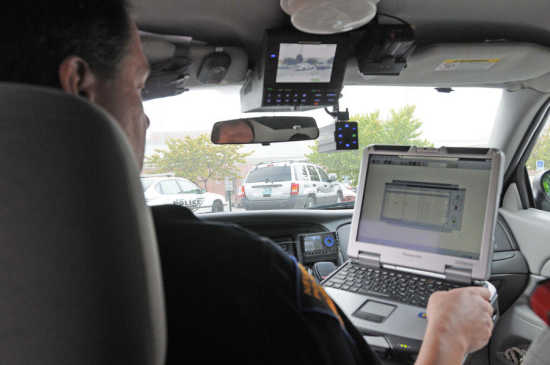Nevada gets grant for a new police officer

A United States Department of Justice grant awarded to the Nevada Police Department will allow the department to hire a new officer whose position will be fully funded for three years, according to Nevada Police Chief Graham Burnley.
A Community Oriented Policing grant in the amount of "$140,000 and some change" according to Captain Casey Crain, was awarded to the department recently as part of a larger project. Crain said that about "85 agencies applied for the funds and the Nevada Police Department was one of seven that actually received funding. The money was allocated to departments of all sizes. The Kansas City, Mo., and Springfield departments also received grants.
Burnley said he has ambitions of using the new position to bolster the crisis intervention team already in place in the city. Burnley also said that he thought the recent implementation of that program had a lot to do with getting the grant. That kind of community policing is exactly what the grant is supposed to be used for, he said.
Crime prevention programs, CIT and community education and involvement is where the chief would like to see the new officer working. He will also be available to assist detectives, be visible on the streets of the city and perform the same duties required of any other officer.
Burnley said that before he came to the Nevada Police Department it was a 20 man department. When he took the helm there were only 19 officers, but that, according to Crain, is because of an "open position that was not filled." This grant will give the department funding for that 20th officer for three years, but part of the grant agreement is that the city "will keep that position on board for one year" after the grant expires. Burnley seemed confident that the city would find the funding to keep the position after the grant runs out.
The officer has not been hired yet. There are still some hoops that need to be jumped through. Burnley said, "we have various steps we have to run through and the council still has to sign off on it, and I'm confident they will." Burnley said the new officer should be on the job by the first of the year. Once the process is complete the new officer will hit the streets and be using some of the new technology another grant has allowed the police department to acquire recently.
About half of the Nevada Police Department's patrol cars are now equipped with mobile data terminals which give the operating officer instant access to data that used to be time consuming to get. The MDTs are basically just an on-board computer with specific programs that provide officers with background information.
Right now the officers have access to the Global program which provides them information on anyone with a criminal history with the Nevada Police Department. It is "a great tool," said Burnley. He mentioned an instance where an officer used the system to discover information that led to the recovery of some stolen property. He said that in a few minutes at the computer terminal, the officer accomplished what would have taken hours or days without the system. All of the MDTs were purchased with a grant that was worth about $50,000.
The next step up in law enforcement technology will be for the city to install a firewall in their computer system that will allow them to access the Missouri Uniform Law Enforcement System. The MULES computerized system is a database of everyone with a criminal history in the state. With it officers will be able to know instantly if a subject is wanted or has a long criminal history. It also gives officers access to the National Crime Information Center. The NCIC database does the same thing on a national level.
All of this technology and the addition of another officer will allow the police department to do their job better. The MDTs are in the cars, but the firewall allowing access to the other system has yet to be installed. The firewall to allow officers to access the MULES is needed because of the security measures needed to get into the database. Officers will be given access codes and passwords to protect the system. They will be trained how to use the MULES system by the state at no charge to the department.
It is a much speedier process than using a dispatcher for gathering information, according to Burnley. He likes it because his officers will not have to use an office bound computer to gather information. They will spend "more time on the streets," he said. Burnley is excited about these changes in the department. He said it is "bringing us into the 21st century."
